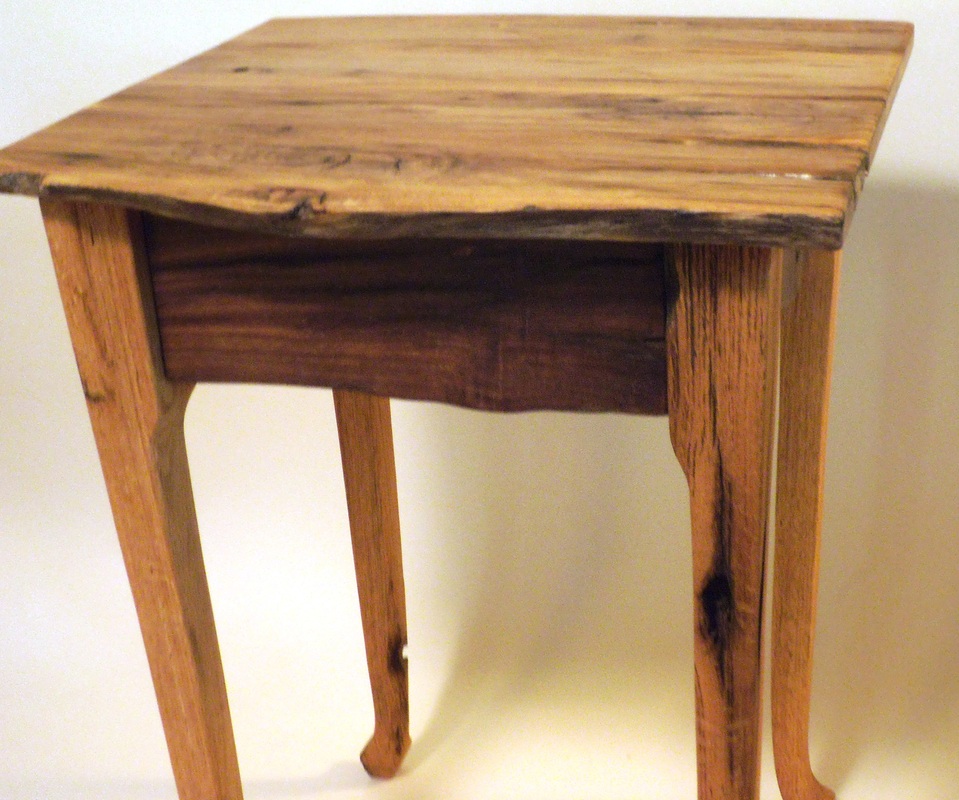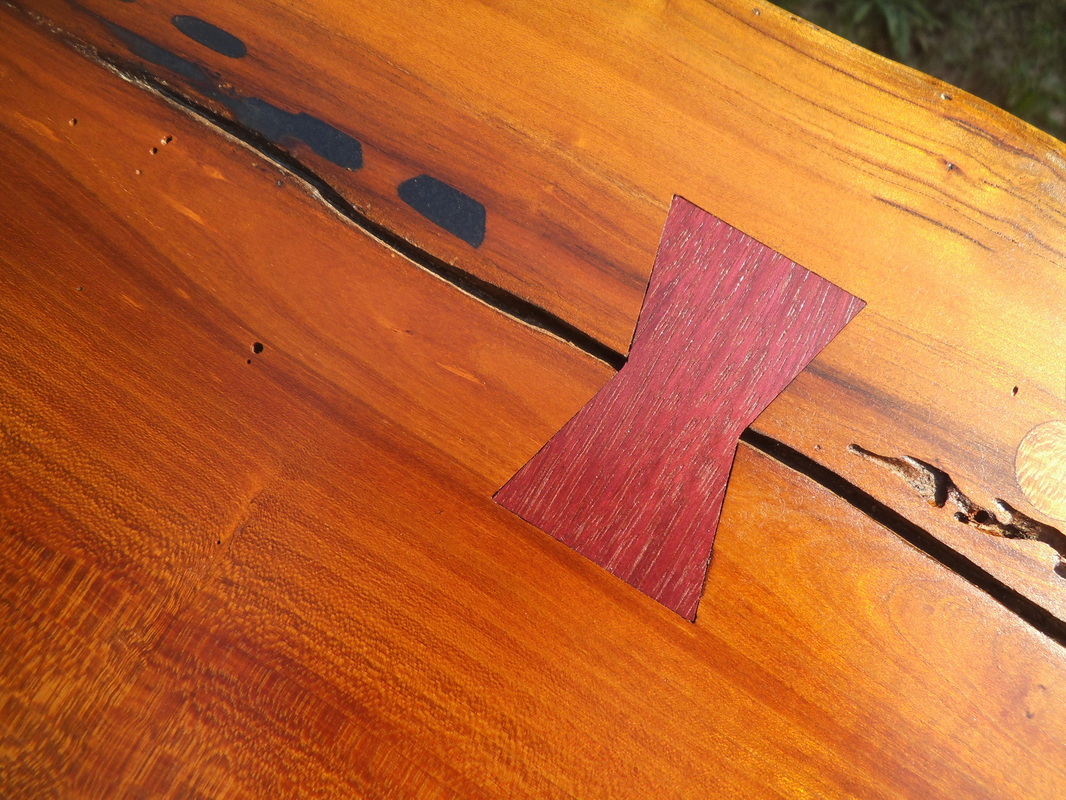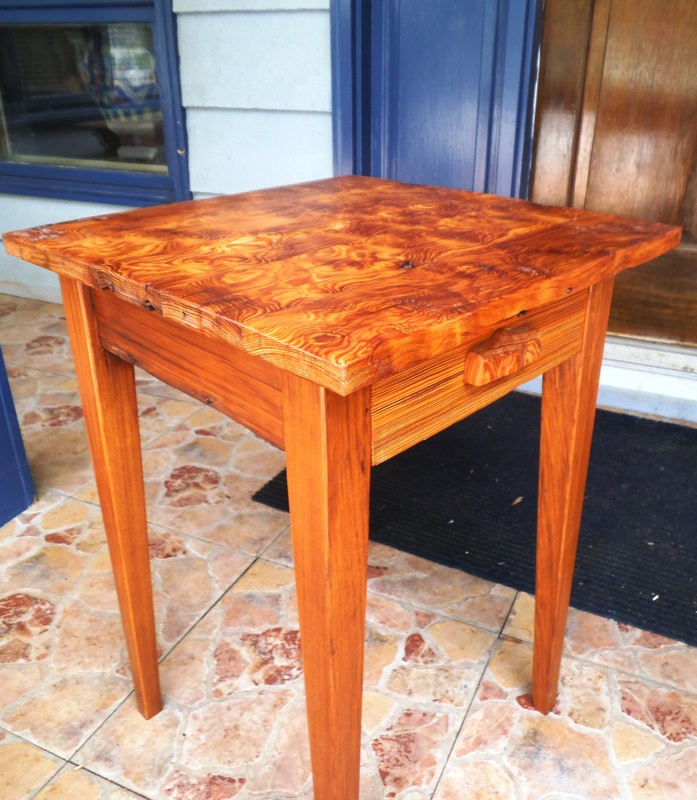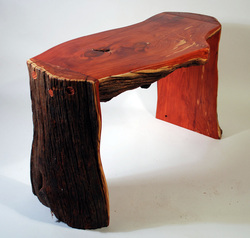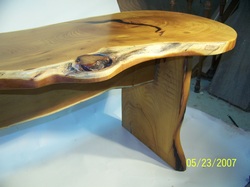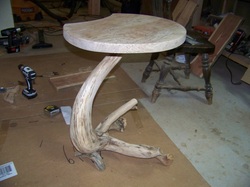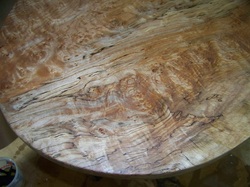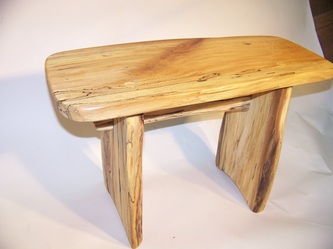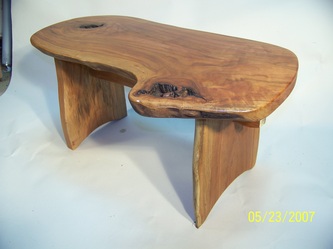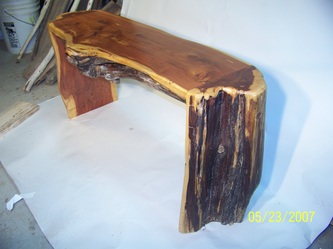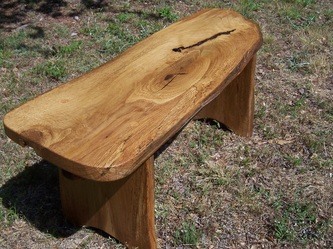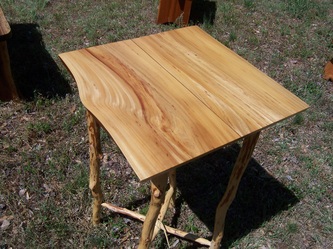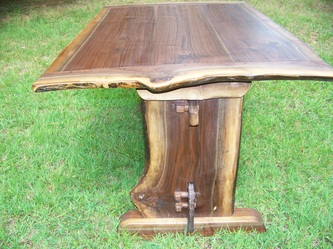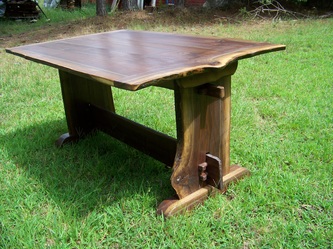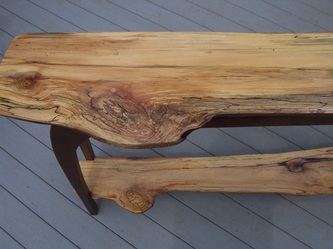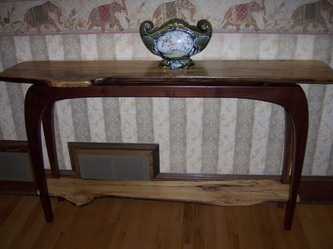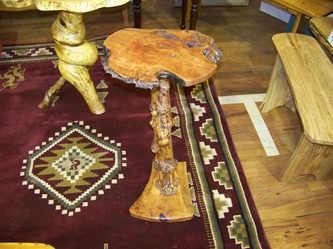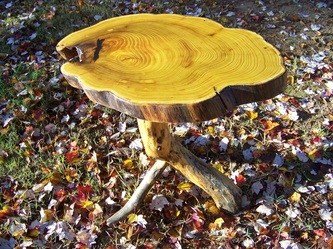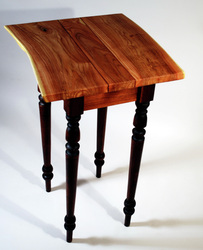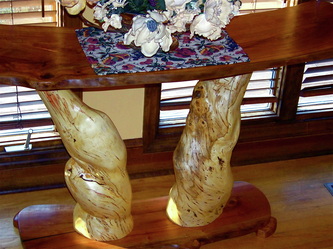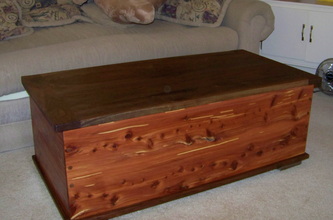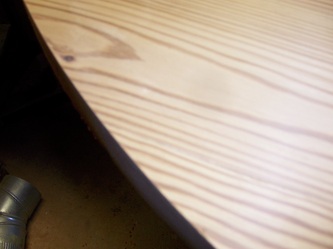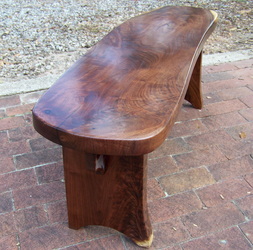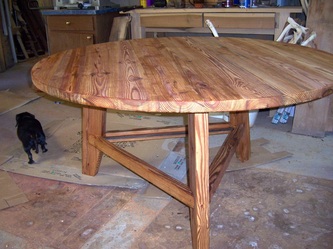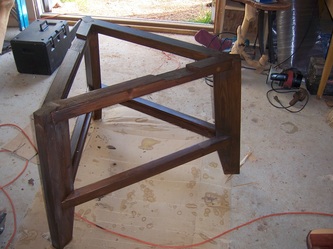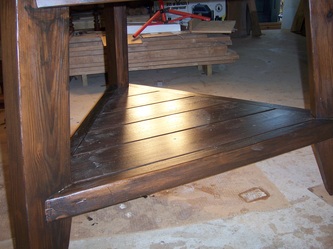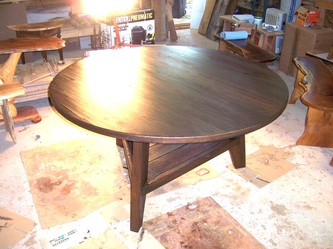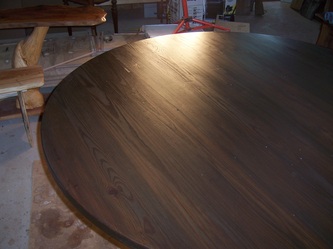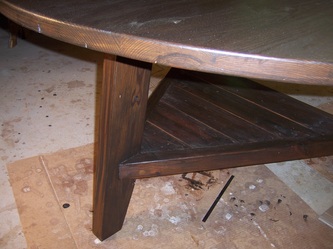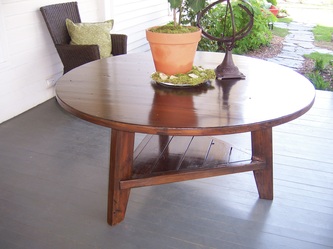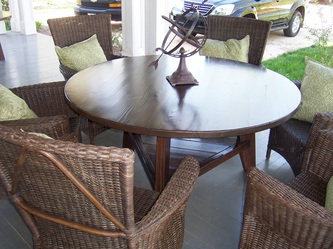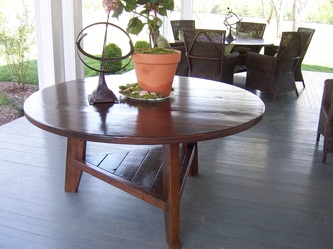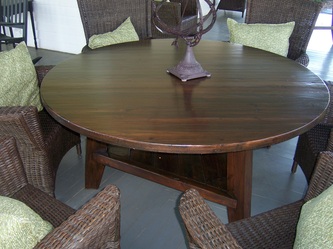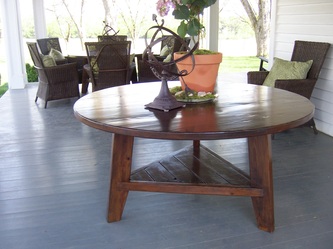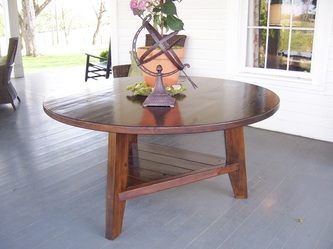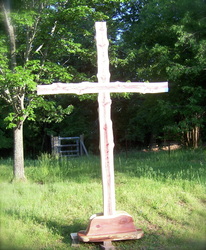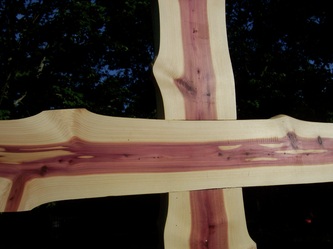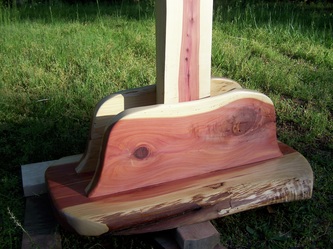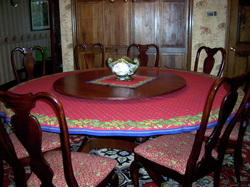About us:
We use locally harvested woods with exceptional grain and character to produce hand crafted benches, tables, and other furniture that projects a highly organic feel. We're located in scenic North Georgia, not far from Athens and Atlanta. Send us an e-mail at persimmonridgedesigns@gmail.com. Or, if you would like to speak directly to a real person you can call me (Larry McDougald) at 706-338-0603.
Functional Art: Designs you can live with!
We start with the natural beauty of wood to build furniture that is unique in design, attractive, and a pleasure to use.
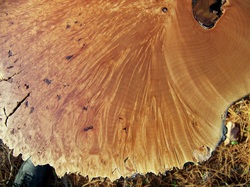
Most of our lumber comes from local cuttings. In entering the field a few years ago we discovered that a wealth of materials were available if one developed an infrastructure for fetching the logs from storm damage, property clearing for housing development, roadwork, etc. Also, having a sawmill nearby was a big part of the picture. In this way, we've been able to obtain strikingly beautiful supplies of wild cherry, black walnut, osage orange (bois d'arc), red and white oak, chinaberry, honey locust, persimmon, red cedar, ambrosia maple, boxelder, and other woods.
We are proud of this 'green' approach to woodwork, depending primarily on salvaged or recycled lumber.
We are proud of this 'green' approach to woodwork, depending primarily on salvaged or recycled lumber.
We work with clients to design what they want and what they need

This 3' x 5' trestle table was designed of black walnut with 'live' edges to fit into a rustic vacation home. Since the couple's cottage is in Montana, we had to design it to be easily disassembled and reassembled. They transported it from Georgia to Montana in the back of their Toyota 4-Runner! (There were 18 pegs altogether, which had to be numbered and fitted. We also made the benches, from walnut and mesquite)
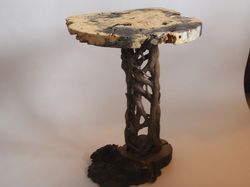
This little table is a combination of three woods; buckeye burl from California for the top, cherry burl for the base, and an unusual woody vine for the pedestal. I found this vine several years ago at a site being razed for a shopping mall. The vine had grown around a small tree, which had died and rotted away, leaving the latticework design you see here. The dimensions are 26" h, and the top is about 16 x 18.

This design has been popular; the curved and tapered legs, the live edges for the aprons, the distressed wood. The legs for this piece are from local black walnut, the top and sides from cherry or cherry burl. There is also a drawer. I didn't add a 'pull' for this drawer, although I often do, usually crafted from the same woods. The table is 26" h, and the top is abut 18 x 18.

Another table of this series; the woods are quartersawn white oak and walnut. I used a different leg design here, based on the popular cabriole form. There is a drawer. As you can see, I added a drawer pull, fashioned from the walnut wood of the legs and aprons.
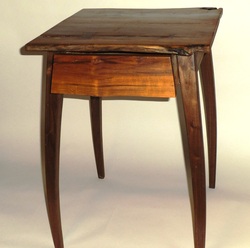
The table below/right is crafted of longleaf pine salvaged from an old house more than 100 years old. The unusual grain pattern in the wood occurs in less than 1% of the boards from this site. My woodworker friends are amazed and have scant suggestions as to why this wood had such intriguing grain. There is a drawer, with a handcrafted pull.
ABOVE: This table, with the cabriole-type legs, is crafted of chestnut oak and walnut. The wood is highly stressed, as seen in the voids of the leg and the weathered appearance of the top. LEFT: This table is another crafted of cherry (top and aprons) and walnut (legs). The drawer now has a pull.
ABOVE: This table, with the cabriole-type legs, is crafted of chestnut oak and walnut. The wood is highly stressed, as seen in the voids of the leg and the weathered appearance of the top. LEFT: This table is another crafted of cherry (top and aprons) and walnut (legs). The drawer now has a pull.
Oak Burl Coffee Table
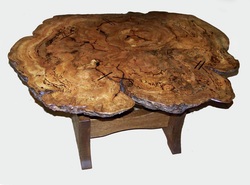
Many projects come with a story attached, or arise from nostalgic connections. A souvenir from the old home place. When they sold the family farm, the old oak tree beside the house had an enormous burl, so they cut it off with a chain saw. Some years later they commissioned us to make a coffee table from it. This 30' chunk of wood weighed about a hundred pounds and had to be flattened using a specially built cradle to guide a cutter. The base was fashioned from walnut and joined to the top with sections of stainless steel pipe.
Contact us!
If you would like to discuss a project you can send e-mails to: mcdougaldd@yahoo.com.
Or if you would rather to speak directly to a real person you can call me (Larry McDougald) at: 706-338-0603.
Or if you would rather to speak directly to a real person you can call me (Larry McDougald) at: 706-338-0603.
This was a hefty project!
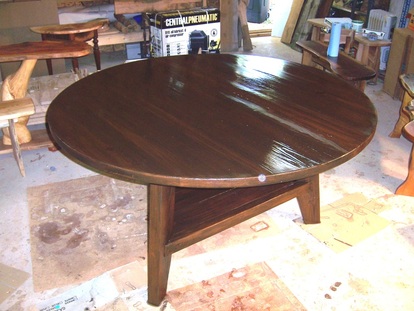
I'd never heard of a cricket table until this client's interior decorator told her she needed two 5' round tables on her wide wrap-around porch. With a little research I discovered that these tables got their name from the British custom of taking a small table outside while they watch the cricket matches, a table where they can set their drinks and some food. The lower shelf is called a 'pot board'. You'll find a lot of these on the web, antiques dating back 200 years or more, so this is not a recent thing. You can even find a video of Norm Abrams, the TV woodworking guru, making one. It was very helpful in visualizing the form, design and techniques. However, most of them are about 30 inches in diameter. These are 60 inches (five feet). They weigh a ton. Before I cut the glued-up blank into a circle, they weighed 2 tons!! Fortunately, my working partner Robert is young and strong. We thought about the choice of wood for the project and decided on antique pine. There's a lot of this around here, materials recycled from hundred-year-old buildings that are demolished for one reason or another. This batch came from a church in Athens GA, where it had lined the ceiling of the sanctuary for more than a hundred years. It's been an experience, solving all the problems with creating something this size and weight, but the results are beautiful and the project was very rewarding.
We needed a lazy susan for our 7 ft diameter dining table (how do you pass things on a monster like that?)
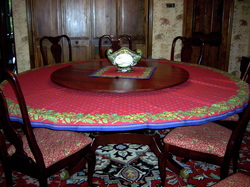
After years of procrastination and indecision, Robert and I stumbled onto a supply of genuine mahagony, which matches the table very nicely. I found a sturdy lazy susan base at Rockler Woodworker Supply, and we made the top 4 ft in diameter, leaving 18 inches on all sides. It turned out very pretty. I can't wait to try it out.
